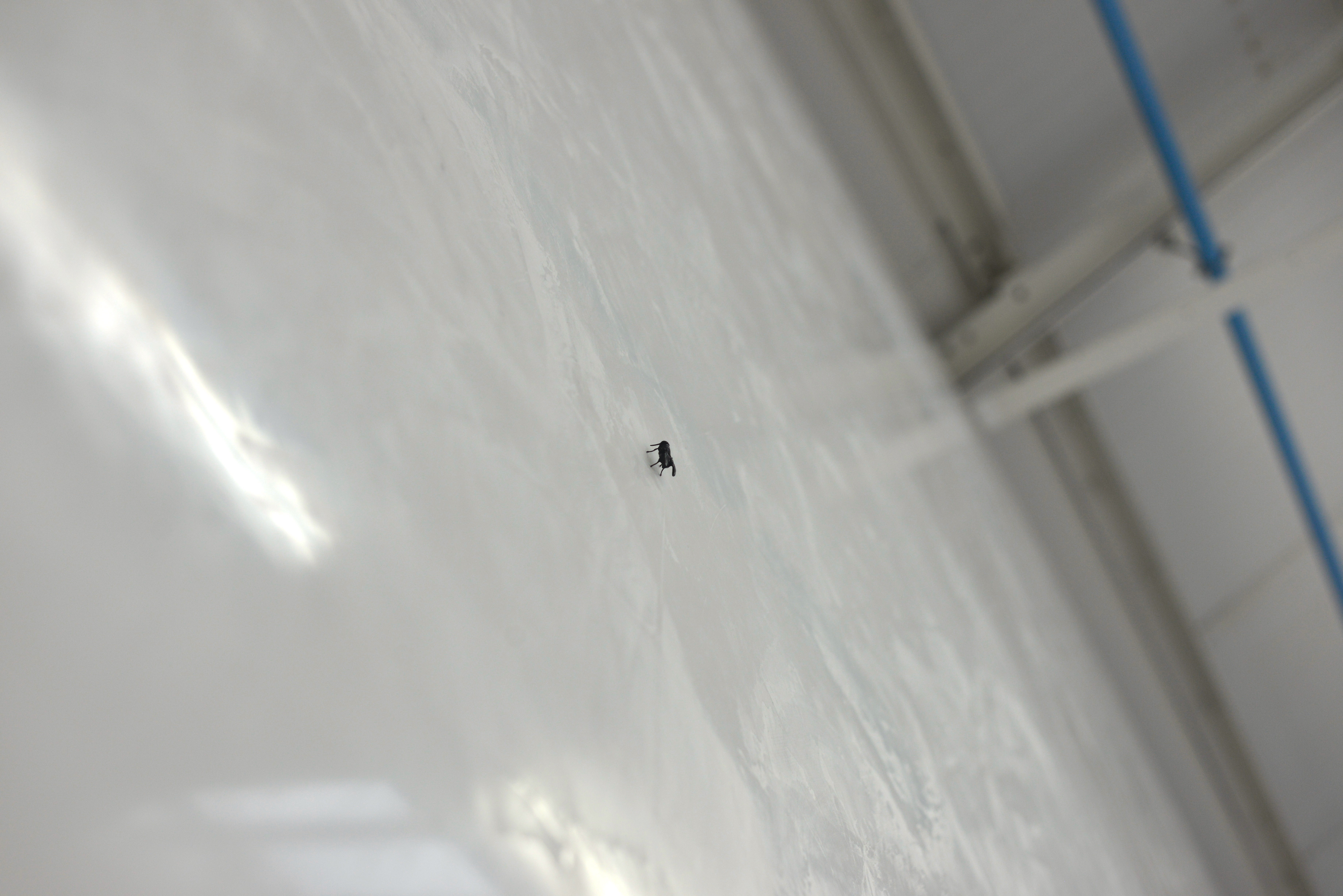






In Vasari's Renaissance text 'The Lives' (1550), he recounts the story of Giotto painting a fly upon the nose of one of his masters paintings, when his master returns to the studio he repeatedly tries to swat the fly from the surface of the painting and in doing so realises the genius and arrogance of his student.
The fly is synonymous with death, illusion and arrogance.
The fly occupies the space between planes, it is both part of and a part from the surface and is unselfconscious of this position.
The perspective of looking both includes and removes its presence from the image. It disrupts the relationship between image and reality.
Lacan likens the fly found in tromp l'oeil to being a lure for the gaze.
Chalk is formed by the gradual accumulation of calcite shells over extensive periods of time to form rock. Chalk is literally made from the remains of death. It is possible to force it into shape through recompression of its tiny particles. It can be reconstituted numerously with minimal loss of mass.
The surface of chalk absorbs and deadens, it is densely matte and comes away under the touch.
Marmorino also known as Vasari is a marble dust plaster used to imitate the palatial homes of Rennaisance aristocrats.
Marble is chalk which has been exposed to intense heat and pressure. It took 10 days to create a surface a few microns thick using the trowel and hawk in the same manner as palette and knife.
Image Reference: Portrait of a Woman of the Hofer Family (c.1470) unknown Swabian artist (National Gallery London)
Giotto's Cosmic Crush
5000kg compressed chalk, Marmorino plastered walls, bronze cast fly
2015